Scuba Cylinders in UAE
(12 products available)Scuba cylinders, also known as scuba tanks, are parts of diving equipment that are filled with compressed air for breathing underwater. Most scuba tanks are made from aluminum or steel due to their high resistance to pressure; they make diving safe and reliable. Standard sizes range from 80 cubic feet but can vary, such as small tanks used for shallow dives and bigger ones for longer periods underwater. These cylinders possess a valve that controls airflow into the cylinder, hence permitting divers to control the flow of air while in water. Maintenance with periodic visual inspections and hydrostatic testing is important because the cylinder must be safety- and performance-ready before taking someone diving. Divers have to know how to appropriately fill the cylinders in a manner that does not contaminate or overfill them, which is poorly done and results in very unsafe situations. If you are looking for Scuba Cylinders in UAE. TradersFind connects you with leading manufacturers across UAE that provide a wide range of cylinders for your business. Our complete listings and detailed product specifications make it seamless to find the best Scuba Cylinders suppliers in UAE to fulfill your requirements.
Scuba cylinders, also known as scuba tanks, are parts of diving equipment that are filled with compressed air for breathing underwater. Most scuba tanks are made from aluminum or steel due to their high resistance to pressure; they make diving safe and reliable. Standard sizes range from 80 cubic feet but can vary, such as small tanks used for shallow dives and bigger ones for longer periods underwater.
These cylinders possess a valve that controls airflow into the cylinder, hence permitting divers to control the flow of air while in water. Maintenance with periodic visual inspections and hydrostatic testing is important because the cylinder must be safety- and performance-ready before taking someone diving. Divers have to know how to appropriately fill the cylinders in a manner that does not contaminate or overfill them, which is poorly done and results in very unsafe situations.
If you are looking for Scuba Cylinders in UAE. TradersFind connects you with leading manufacturers across UAE that provide a wide range of cylinders for your business. Our complete listings and detailed product specifications make it seamless to find the best Scuba Cylinders suppliers in UAE to fulfill your requirements.
Scuba cylinders, also known as scuba tanks, are parts of diving equipment that are filled with compressed air for breathing underwater. Most scuba tanks are made from aluminum or steel due to their high resistance to pressure; they make diving safe and reliable. Standard sizes range from 80 cubic feet but can vary, such as small tanks used for shallow dives and bigger ones for longer periods underwater.
These cylinders possess a valve that controls airflow into the cylinder, hence permitting divers to control the flow of air while in water. Maintenance with periodic visual inspections and hydrostatic testing is important because the cylinder must be safety- and performance-ready before taking someone diving. Divers have to know how to appropriately fill the cylinders in a manner that does not contaminate or overfill them, which is poorly done and results in very unsafe situations.
If you are looking for Scuba Cylinders in UAE. TradersFind connects you with leading manufacturers across UAE that provide a wide range of cylinders for your business. Our complete listings and detailed product specifications make it seamless to find the best Scuba Cylinders suppliers in UAE to fulfill your requirements.
View less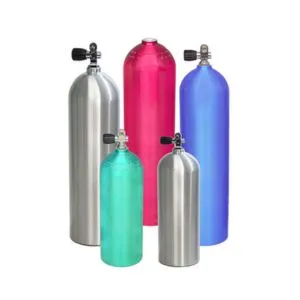
- Material : High-grade Aluminum
- Capacity Options : Various Sizes Available
View more...
Alcan International LLC
Other Categories
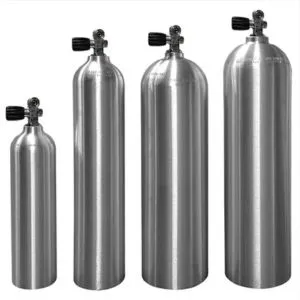
- Water Capacity : 2 L to 13.2 L
- Working Pressure : 200-232 BAR
View more...
DiveCampus Diving Club
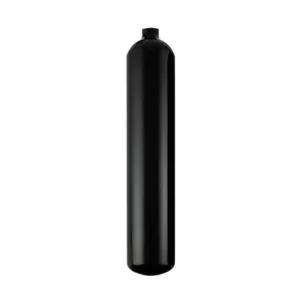
- Usage : Technical Diving
- Capacity : 3L
View more...
GTD Diving Equipment Traiding LLC

- Capacity : 50 liters
- Pressure Options : 200 bar or 300 bar
View more...

- Material : Superior L6X aluminum alloy
- Corrosion Resistance : Excellent performance in harsh conditions
View more...
Sea Zone UAE
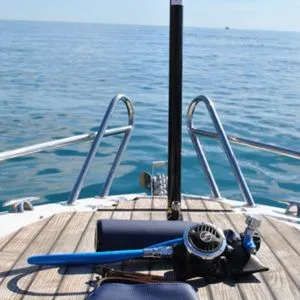
- Tank Transition Time : Less than 10 seconds
- Pump Pressure : Up to 200 bar
View more...
Alma International General Trading
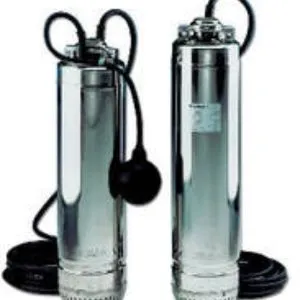
- Head : up to 80 m
- Power : 0.55 KW up to 1.10 KW
View more...
DXB Solutions LLC

- Size : 13 Cubic Feet
- Length : 75 mm
View more...
Al Boom Diving
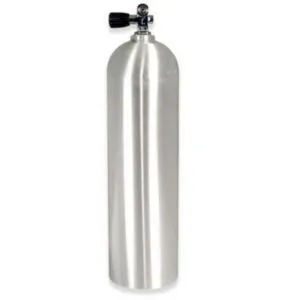
- Diameter : 8 inches
- Length : 26.2 Inches
View more...
SCUBAPRO UAE

- Working Pressure : 200 bar
- Weight : 1.2 kg
View more...
Dive Garage
An easy way to post your sourcing requests and get quotes.
- One request, multiple quotes
- Verified suppliers matching
- Quotes comparison and sample request
Scuba Cylinders in UAE
Scuba cylinders play the most crucial role among others in UAE by bringing out the region's incredible marine life and extraordinary undersea sceneries of exploration. Aluminum and steel are common types through which these cylinders can be manufactured. Its capacity is also high to carry the pressure to bring safety while diving underwater, and it comes in numerous sizes depending on individual people's preferences and needs regarding the time spent for one dive.
The whole divers business in UAE is extremely compliant with the safety conditions so there is continuous evaluation and maintenance of every gear of scuba in UAE. Many dive shops and rental services offer these tanks and accessories to beginners and professional divers. In a general way, it has been vital in letting divers have memorable experiences while diving in UAE.
UAE Market Overview
The market for scuba cylinders in UAE is growing consistently. UAE has activities of tourism characterized by an underwater nature, especially in diving, which provides a strong market demand in this field. Generally, adventure tourism is an emerging area responsible for the growing Middle East markets for divers' gear like scuba tanks and their accessories. Aluminum dive tanks and steel cylinders would remain at the forefront and continue leading in the marketplace as the demand increases. Prospects in the market are also bright due to growth in material technology and the increasing supply of different types of diving equipment.
Market Analysis and Insights
UAE examines the Scuba cylinder market with a thorough analysis of its current situation, trends, and crucial insights important for businesses and stakeholders. Having a clear grasp of the dynamics of the Scuba cylinder market is essential for making informed decisions and navigating the constant changes in the industry.
The market report for Scuba Cylinders in UAE examines past growth patterns and offers insights by analyzing key players' competitiveness using SWOT and PEST analyses. Additionally, we explore essential aspects like industry trends and obstacles that will influence the future direction of the Scubai Cylinders market. Through combining both original and additional research, researchers in UAE forecast the future outlook of the Scuba cylinder market, providing scuba cylinders manufacturers and end-users with resources to plan for expansion and build a competitive market position.
Scuba Cylinders Market: Segment Analysis
Segmentation analysis is essential in the study of the worldwide Cylinder market. This examination classifies data and information into separate categories according to unique features like type, application, and region. This procedure assists companies in obtaining a thorough grasp of the market environment and recognizing potential areas for growth within the Cylinders sector.
Market Drivers
Population Growth and Increased Consumption
Population growth and increased consumption drive demand for scuba cylinders suppliers to meet rising needs for recreational and professional diving. The increasing population and elevated consumption habits play a major role in the expansion of the cylinder market.
Technological Advancements and Innovation
Continual technological advancements and innovation are essential for driving market growth and promoting ongoing development. The technology has significantly revolutionized the market for scuba cylinders suppliers, especially in the supply chain in UAE. With lightweight composite materials and increased safety features, comfort and convenience are offered to the users.
Supportive Government Policies
Positive governmental policies create a supportive atmosphere for business growth, promoting economic activities and investment.
Rising Disposable Income
The increasing population and elevated consumption habits play a major role in the expansion of the cylinder market.
Growing Awareness of Product Benefits
Continual technological advancements and innovation are essential for driving market growth and promoting ongoing development.
Market Restraints
Economic Downturns and Reduced Consumer Spending
Challenges in market growth arise from economic downturns and reduced consumer spending, affecting the demand for these cylinder products. Demand for these cylinders usually decreases during economic recessions as consumers cut back on recreational spending and hence the production volume is impacted. Scuba cylinders manufacturers may have to work on cost efficiency or promotions to survive during such a period.
Intensified Competition and Market Saturation
The market is limited by intense competition and saturation, necessitating creative strategies to sustain growth.
Stringent Regulatory Frameworks
Strict regulations create challenges for companies in the market, requiring them to dedicate resources to meet compliance standards which could limit their operational freedom.
Emergence of Alternative Products
The entry of different products into the market limits consumer focus and affects the demand for these cylinders.
Technological Obsolescence
Staying competitive in the market requires continuously adapting to new technologies due to the threat of becoming technologically obsolete. The scuba cylinders suppliers have to follow technological obsolescence in that they have to change the products to modern standards for safety and consumer demand. Maintaining innovations helps the suppliers keep pace with the competition.
Sources:
https://www.verifiedmarketreports.com/product/diving-cylinder-market-size-and-forecast/
https://www.gminsights.com/industry-analysis/scuba-diving-equipment-market
Benefits of Scuba Cylinders in UAE
Scuba cylinders in UAE enable safe, extended dives, with corrosion-resistant options suited for warm saltwater, enhancing underwater exploration and convenience.
Extended Underwater Excursion
Scuba diving cylinders are filled with compressed air that enables extended exploration in water without the reliance on surface breathing. High-volume capacity air means going down deep and staying long allowing freedom to explore the underwater environment, observe aquatic animals, and take photos or do research underwater.
Safety and Redundancy Improvement
These cylinders, of course, are the most secure as twin or pony bottles; that is a fantastic redundancy that assures safety for the divers, especially in case of an emergency or while diving deep. With independent air supply, helps the divers from facing a few risks like running out of air with easy accessibility to breathing gas. Dive cylinder accessories like reserve valves, pony bottles, pressure gauges, and tank boots enhance safety by providing backup air and monitoring capacity.
Adjustable Buoyancy Control
Scuba diving cylinders especially the steel ones help in achieving neutral buoyancy. Due to the negative buoyancy, the steel tanks counterweight, thus making it more effortless to control buoyancy. Balanced buoyancy translates to more mobility and effort conservation for divers who tend to conserve energy for optimal performance during dives.
Better Range and Depth
High-capacity, high-pressure scuba diving tanks give divers enough air for deeper dives and longer travel distances. For technical, wreck, or cave divers, these tanks could make all the difference between life and death by providing a safe exploration of deep sites or shallow sites that create extended dive times where immediate surfacing is not possible.
Durability
These cylinders, whether steel or composite, are known to be very robust. They can withstand the worst underwater conditions. Provided with proper maintenance, they may last for years, showing resistance to corrosion, impacts, and pressure changes. The durability of the product minimizes the replacement rates, hence saving on cost while at the same time proving to be environmentally friendly.
Types of Scuba Cylinders in UAE
Common scuba cylinders include aluminum for corrosion resistance, steel for buoyancy control, and compact pony bottles for safety.
Aluminium Cylinders
Aluminium scuba cylinders are very popular in terms of lightweight design and cost. They are appropriate for the beginner and the recreational diver. Generally, they have thicker walls than steel because aluminum is less strong than steel, hence they are bulkier. Nevertheless, aluminum tanks are quite resistant to corrosion, particularly in saltwater.
Steel Cylinders
Steel scuba cylinders are valued because they are durable and rated to higher pressures, thus allowing divers to carry more air in a compact design. They are denser and negatively buoyant; therefore, they are suitable for divers who want to carry less extra weight. Additionally, steel tanks last longer when maintained against rust.
Composite Cylinders
This equipment makes use of carbon fiber or even a combination of fibers to comprise composite scuba tanks with materials that make it very lightweight, easy to care for, and transport the equipment into various depths underwater with minimal friction. They are capable of holding very huge pressures hence providing an excellent time to do dives while on the other hand costing much; for instance, ordinary checks, if signs arise due to impacts or even aging will contribute greatly to it.
High-pressure Cylinders
High-pressure cylinders hold compressed air at around 3000–3500 psi, which means longer dive times with smaller tanks. They are usually made of steel and have to be fitted with a special regulator because the pressure is so much higher. The diver benefits from lower drag and buoyancy but the tanks are often much more expensive and require special maintenance.
Low-Pressure (LP) Cylinders
Low-pressure cylinders contain air at about 2400 psi, giving the balance and size that is convenient for the recreational diver. They can be overfilled slightly to last longer. Made primarily of aluminum or steel, LP cylinders are flexible and more universally compatible than HP tanks but give shorter dive times.
Double cylinders
Double cylinders combine two tanks for longer dives, which are normally done using technical or cave diving. The extra gas storage allows the holding of more gas, and a manifold system is commonly added. Double cylinders bring safety in difficult conditions with redundancy but add a considerable amount of weight, complexity, and drag that only advanced training for the divers can manage.
Portability and Convience
Modern cylinders are portable, making it easier and more comfortable to transport them to dive sites. Lightweight scuba tanks are aluminum or composite ones reduce the physical strain on the body. Their portability and ergonomic designs make it easier for divers to handle equipment, making the diving experience more enjoyable.
Key Considerations while choosing Scuba Cylinders in UAE
When choosing scuba cylinders in UAE, consider tank material, pressure, buoyancy, size, local regulations, maintenance needs, and temperature compatibility.
Material and Corrosion Resistance
Corrosion resistance is important in warm salty water, meaning much of UAE. Seawater corrosion resistance makes the aluminum tank low-maintenance; steel cylinders provide slightly better buoyancy, although possibly requiring additional maintenance for rust, so dive site-specific knowledge of the region would be necessary when deciding upon a material.
Pressure and Volume
Choose cylinders with suitable pressure ratings for the duration to be spent underwater and at what depth. High-pressure cylinders (3000–3500 psi) give more time underwater but are often used with more specialized equipment. For most recreational dives in UAE, low or mid-pressure tanks (about 2400 psi) may be sufficient, weighing air supply against cost and convenience.
Tank Buoyancy Characteristics
The buoyancy of a tank can greatly affect the comfort of a diver, and this is important in warm UAE waters. Aluminum tanks become positive as they drain off, so they will need weight to be added. Steel tanks, because they are always negative in buoyancy, will help reduce this requirement. Choose a cylinder with the right buoyancy to provide comfort and balance during your dive.
Size and Portability
Consider the size of the cylinder based on the type of dive and the access to the site in UAE, considering the proportion of shore-based to boat-based dives. Much smaller, lighter tanks are easier to carry and less cumbersome, ideal for shore diving. Larger tanks can hold air longer, but they are cumbersome, so these should be weighed and sized based on individual handling preferences.
Certifications and Regulations
Ensure the cylinder is UAE safety compliant and certified. For international compliance, check for DOT (Department of Transportation) or CE (Conformité Européenne) marks. Local dive shops must also support the servicing and inspection of cylinders to ensure compliance with regulations and diver safety.
Maintenance and Inspection Support
Regular inspection and maintenance should be available in the diving environment in UAE. Choose a cylinder from a manufacturer that has local support for hydrostatic testing, visual inspections, and other service needs. Maintenance should extend the life of a cylinder and ensure that the cylinder will perform safely and reliably in the marine environment.
Budget and Replacement Costs
Steel and composite tanks are also a little more expensive than aluminum. You will take into consideration the number of dives you make and how much budget you have for possible replacements or services. Choosing an affordable, tough tank is a balanced choice; if you dive frequently, you may want to ensure that you have an option for multiple cylinders.
Temperature and Air Compatibility
Diving in warm waters requires proper air management. This is because high temperatures cause the pressure inside cylinders to rise. Choose the cylinder with the ability to work in varying temperatures. Otherwise, you may be left with an expansion issue, especially for high-pressure tanks, where temperature differences might affect both air quality and safety.
Find the leading Scuba Cylinders manufacturers in UAE on TradersFind
TradersFind is a reliable platform for those who are looking for Scuba Cylinders in UAE. You can find Scuba Tank Accessories across UAE and get complete details such as contact details, location, or WhatsApp number.
Through that, you can get in touch with them. In short, TradersFind is the right platform for you to connect with the leading Scuba Cylinders manufacturers in UAE without any difficulty.
Frequently Asked Questions (FAQs)
Q: What are these cylinders filled with?
A: A lot of people who don't dive think that scuba tanks contain pure oxygen. Typically, recreational divers use air (about 21% oxygen and 79% nitrogen) or Enriched Air Nitrox (varying from 22% to 40% oxygen with the rest nitrogen).
Q: What is proper care for a scuba cylinder?
A: In addition to washing your cylinder and valve with clean water and keeping it in a cool location, never let it completely drain – always store it filled with air to prevent moisture from entering. Make sure to have your tank visually examined every year and pressure tested when needed.
Q: What is the maximum depth for a scuba tank?
A: The maximum depth for an average recreational scuba diver is 130 feet. To go deeper and investigate wrecks, caves, and other locations below 130 feet, certifications from agencies like PADI, NAUI, and SSI are necessary.
Q: What connects to a scuba cylinder?
A: Regulators are attached to cylinder valves using either a DIN (screw-in) or yoke (bracket) system. Adapters are available to allow DIN regulators to be used with a yoke valve.
Q: What is the pressure in a scuba cylinder?
A: Divers have the option to select from either aluminum or steel SCUBA tanks. Dive tank pressures vary widely, with the most typical pressures being "low" (2400 to 2640 psi), "standard" (3000 psi), and "high" (3300 to 3500 psi).
Copyright © 2024 Interconnect Marketing Management L.L.C All rights reserved.















